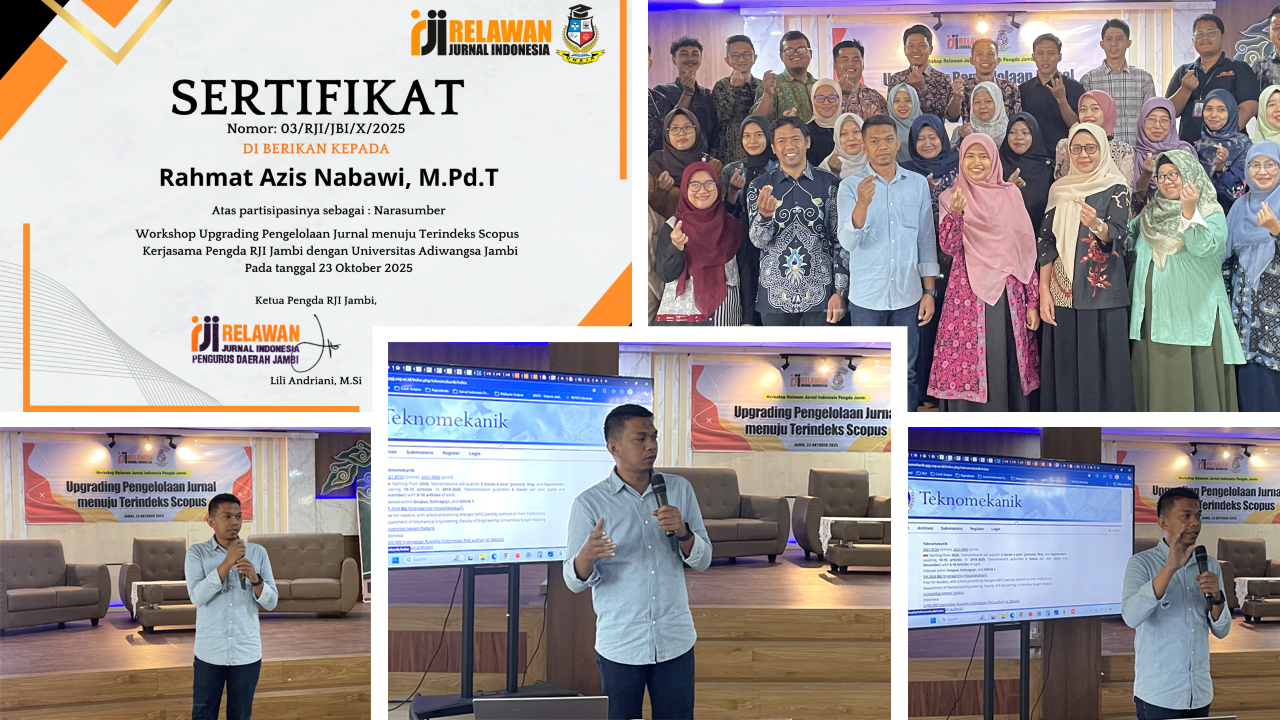Differences Strength of Low Carbon Stainless Steel St 37 with Electrical Welding Compound V Use Materials Add Electrodeof Type-RB and Type -RD
DOI:
https://doi.org/10.24036/tm.v1i1.472Keywords:
Electrode Type, Low Carbon Steel, Welding, Hem, Tensile TestAbstract
This study aims to determine the difference in tensile strength of low carbon steel St 37 which is welded with RB type and RD type electrodes. The welding utilizes the type of a V-shaped joint with an angle of 600. After low carbon steel St 37 is then subjected to a tensile strength test / tensile test to obtain a tensile strength value. This research uses experimental method by preparing the object of research in the form of tensile test specimen which amounted to 19 pieces and separated into 3 groups. Group I was an untreated / non-welded St 37 carbon steel, a Group II of low carbon steel St 37 welded with RB type electrodes, and a Group III of low carbon steel St 37 welded with RD type electrodes. The cooling medium used after welding is air. The tensile test results show that the average tensile strength of low carbon steel St 37 without welding has a tensile strength of 48.02 kg/mm2 with the largest specimen tensile strength of 48.33 kg/mm2 and strength At the low carbon steel welding St 37 using RB type electrode has an average tensile strength of 29.86 kg/mm2 with the tensile strength of the largest specimen of 34.51 kg/mm2 and the tensile strength of the lowest specimen is 25.00 kg/mm2. While on the low carbon steel welding St 37 using RD type electrode has an average power of 31.83 kg/mm2 with the tensile strength of the largest specimen is 34.51 kg/mm2 and the tensile strength of the lowest specimen is 25.81 kg/mm2. Based on the analysis and T test of low carbon steel welding ST 37 using RB type electrode and RD type there is no significant tensile strength difference
Downloads
References
Bima Aditya. (2013).“Pengaruh kedalaman dan cairan pendingin terhadap kekerasan dan kekasaran permukaan pada proses bubut konvensional”. Jurnal skrispi Strata 1. Unversitas Negeri Surabaya.
Patrick Adebisi Olusegun Adegbuyi Dkk. (2010).” Analysing the effect of cutting fluids on the mechanical properties of mild steel in a turning operation”. Department of Mechanical Engineering, Lagos State University, P M B 1087 Apapa-Lagos, Nigeria.
Suharno. (2008). Prinsip-prinsip Teknologi dan Metalurgi Pengelasan Logam. Solo. LPP UNS dan UNS Press.
Tata Surdia dan Shinroku Shaito. 2005. Pengetahuan Bahan Teknik. Jakarta: PT. Pradnya Paramita
Suharsimi, Arikunto (2010). Prosedur Penelitian. Jakarta : Rineka Cipta.
Widarto. (2008).”Teknik Pemesinan jilid 2”.Jakarta: Depdiknas.
Wirawan Sumbodo. (2008).”Teknik Produksi dan Mesin Industrii”.Jakarta: Depdikbud







